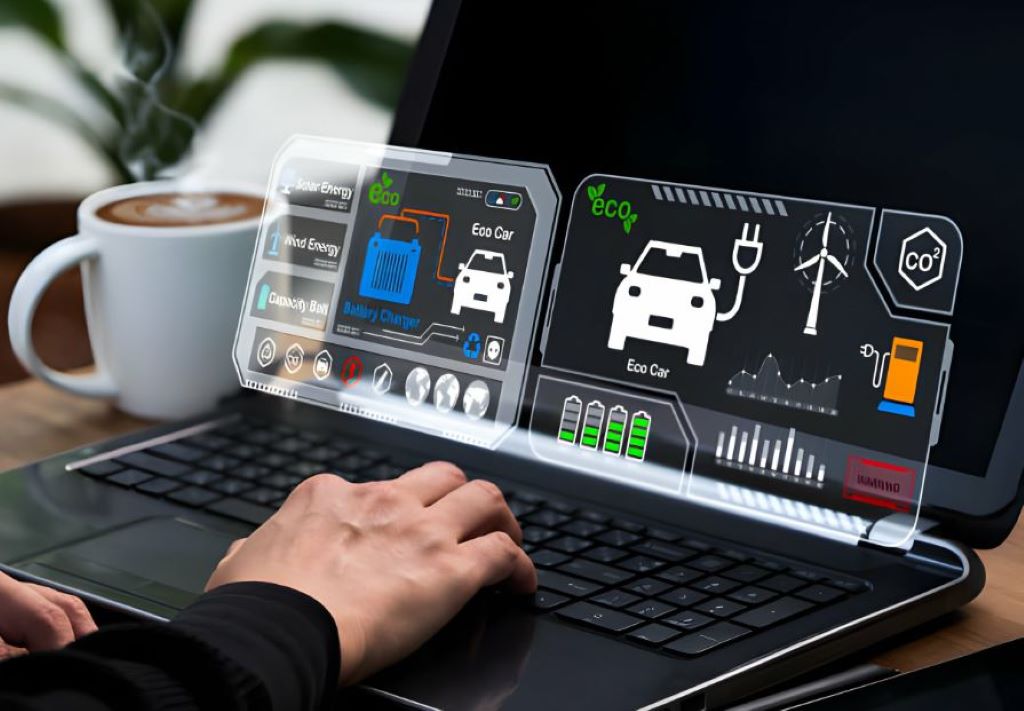In today’s era having a user-friendly website is crucial for automotive businesses to thrive in a competitive market.
This article examines how effective web design strategies can positively impact the presence, user experience, and overall success of businesses.
The Importance of Web Design in the Automotive Industry
The significance of web design in the industry lies in its role as the online representation of businesses. A crafted website not only establishes credibility but also offers visitors a virtual showroom experience making it a critical first impression.
It plays a part in engaging customers building brand trust and influencing purchasing decisions within a highly competitive market.
- Creating an Initial Digital Impression: A designed website acts as the point of contact for potential customers. The visual appeal, layout, and ease of navigation all contribute to the impression that visitors form about a business. Investing in a design not only enhances credibility but also reflects the brand’s professionalism.

- Navigating through the Virtual Showroom: For businesses, their website serves as more, than an online brochure; it acts as a digital showroom. By designing their websites businesses can effectively showcase products highlight features and provide visitors with an experience that closely resembles visiting a physical showroom. Effective web design ensures that potential customers can easily explore and interact with the offerings without hassle.
Responsive Design for Compatibility Across Devices
To ensure viewing and interaction across devices responsive design plays a crucial role. As the majority of users access websites through their devices this approach adapts the website layout to screen sizes.
Doing it not only enhances the overall user experience but also boosts search engine rankings, thus reaching a wider audience.
- Adapting to Mobile Dominance: Considering that most internet users access websites on their devices it becomes essential for automotive businesses to have a design in place. A website that seamlessly adapts to screen sizes offers an optimal user experience on smartphones, tablets, and desktops alike. This caters to an audience while ensuring accessibility.
- Search Engine Friendliness: Responsive design doesn’t just benefit users; it also improves search engine rankings. Leading search engines like Google prioritize mobile websites in their algorithms. Employing a design strategy contributes to visibility in search results driving organic traffic and boosting the online presence of automotive businesses.
Enhancing User Experience with Intuitive Navigation
Streamlining user experience through navigation involves creating a journey for website visitors. Organized information architecture and user-centric design elements play a role, in ensuring easy navigation, which ultimately reduces bounce rates.
By making menus simpler and including prompts, for action automotive businesses can improve the experience for users encouraging them to engage more and take desired actions.

- Making Information Structure Simpler: Easy navigation is key to ensuring a user experience. Organizing information in a way that helps visitors find what they’re looking for effortlessly. Simplifying categories, menus, and page layouts contributes to an interface that’s user-friendly reducing the likelihood of visitors leaving quickly and encouraging them to stay engaged for longer.
- Designing with Users in Mind: Understanding the target audience is crucial when designing websites effectively. Incorporating design elements that cater specifically to users, such as calls to action forms that are easy to fill out and interactive features enhances the overall user experience. These design choices guide visitors smoothly through the website encouraging them to take desired actions and complete conversions.
Appealing Visuals and Consistent Branding
In web design for businesses, it’s important to have appealing elements that maintain brand consistency.
Consistently using colors, typography styles, and imagery helps establish a brand identity while incorporating visuals and multimedia elements to create an unforgettable user experience.
This cohesive design does not capture visitors’ attention. Also communicates the quality and sophistication of the automotive offerings.
- Creating a Memorable Brand Identity through Visual Engagement: Appeal goes beyond looking good; it plays a vital role, in establishing a recognizable brand identity. Using colors, typography, and imagery that align with the brand’s personality is crucial, for fostering recognition. An appealing and cohesive visual design leaves a lasting impression making the automotive business more memorable.
- High-Quality Imagery and Multimedia: When it comes to the industry quality imagery and multimedia elements are essential. Eye-catching visuals, professional photographs, and interactive multimedia content contribute to the attractiveness of products. By incorporating these elements, we captivate visitors. Also, conveys the quality and sophistication of our automotive offerings.
Performance Optimization for Speed and Efficiency
Optimizing website performance for speed and efficiency is an aspect of achieving success in the industry.
Strategic measures such as optimizing images utilizing browser caching and employing content delivery networks (CDNs) help ensure swift and efficient website loading times.
This improvement enhances user satisfaction reduces bounce rates and positively impacts search engine rankings.
- Minimizing Load Times: In today’s paced landscape users expect instant gratification. Therefore web design strategies must prioritize minimizing load times to prevent user frustration and high bounce rates. Optimizing images, leveraging browser caching techniques, and implementing CDNs are steps in achieving efficient website performance.
- Conversion-Oriented Design: The optimization of performance directly correlates with conversions, in the industry. A user-friendly website gives priority to guiding visitors along paths. Strategically placing elements that encourage conversions. Whether it’s a contact form, an option to purchase a product, or a subscription button, a design that focuses on generating conversions ensures that visitors are smoothly guided toward taking the desired actions.

Incorporating E-commerce Functionality
Automotive businesses must integrate e-commerce functionality into their web design as it streamlines transactions and enhances customer convenience.
By incorporating features such, as product browsing, specifications, and secure payment options directly onto the website businesses not only expand their market reach but also improve the overall customer experience fostering trust and facilitating transactions.
- Simplifying Online Transactions: The ability to facilitate transactions is becoming increasingly important for businesses. Effective website design should seamlessly integrate e-commerce functionality allowing customers to easily browse products view specifications and make purchases directly through the website. This level of convenience is the only one that expands market reach. Also enhances the overall customer experience.
- Building Trust with Secure Transactions: Ensuring security in transactions is of importance. Web design strategies should prioritize integrating payment gateways, encryption protocols, and trust badges. Providing customers with an environment for their transactions instills confidence, in them while reinforcing the reliability and integrity of the business.
In conclusion
As the automotive industry continues to evolve businesses need to prioritize having a user-focused and visually captivating presence.
It’s no longer an advantage but rather a necessity. Investing in web design that aligns with their brand identity engages users effectively.
Facilitates interactions so automotive businesses can position themselves for long-term growth and success in the ever-changing digital landscape.










